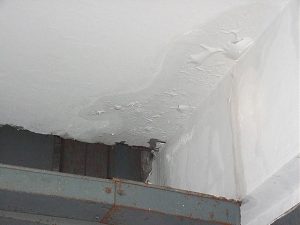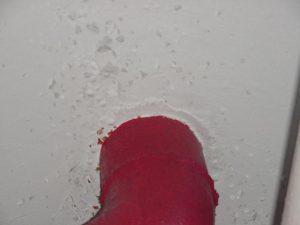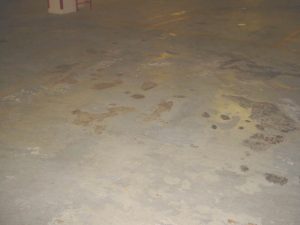Waterproofing
Defect and Repair
| Defect | Repair |
| Water leakage/ ingress
 
 Possible causes: 1) Agressive ground water. Ground water varies in agressiveness depending on the location and in some areas may consist of highly agressive conditions (due to the presence of sulphates and nitrates). Agressive ground water can also be found in areas of close proximity to the sea. 2) Hydrostatic head.** Basement waterproofing are generally subjected to a high hydrostatic head with the groundwater exerting a considerable force onto the system. 3) Impact and puncture damage during back-filling. The waterproofing system would require protection against sharp objects which could damage the system especially during back-filling. 4) Poor construction/ preparation Possible result:
| If the water leakage mainly caused by cracks on the substrate which leads to waterproofing failures, cracks have to be repaired first before any further rectification on waterproofing is done. Epoxy grout is used for structural repair and PU/ acrylic grout for non-structural repair.
 Epoxy grout is used for structural repair and PU/ acrylic grout for non-structural repair. If damage is caused by puncture of waterproofing membrane during back filling, repair of waterproofing must be done immediately. Refer to repair recommendation |
Note:
* If walls or floors of basements in houses already built show signs of dampness or seepage, action must be taken to correct these faults before the surfaces are covered. Dampness on a basement wall can be controlled by applying two coats of a water-cement paint. These paints consist of ordinary or white portland cement and water and may include sand. The paint is mixed to a pancake batter consistency and scrubbed into the wall with a stiff brush. Water-cement paint, to be effective and durable, must be cured in the same way that concrete is cured. Water-cement paints unlike most other types of paint, may be applied to a damp surface; in fact, a dry concrete surface must be dampened before application of the paint.
** Methods have been developed by which the walls and floors of a basement can be waterproofed to resist the hydrostatic pressure of several feet of water. This is done by applying a continuous membrane consisting of alternate layers of bituminous materials and felt to concrete that has been properly mixed, placed and cured.
The use of a membrane to keep a basement dry under wet site conditions is not sufficient by itself; steps must also be taken by the provision of adequate drainage to prevent the build-up of water pressure under floors and against walls.
For more defects, please refer to the Defect Library.